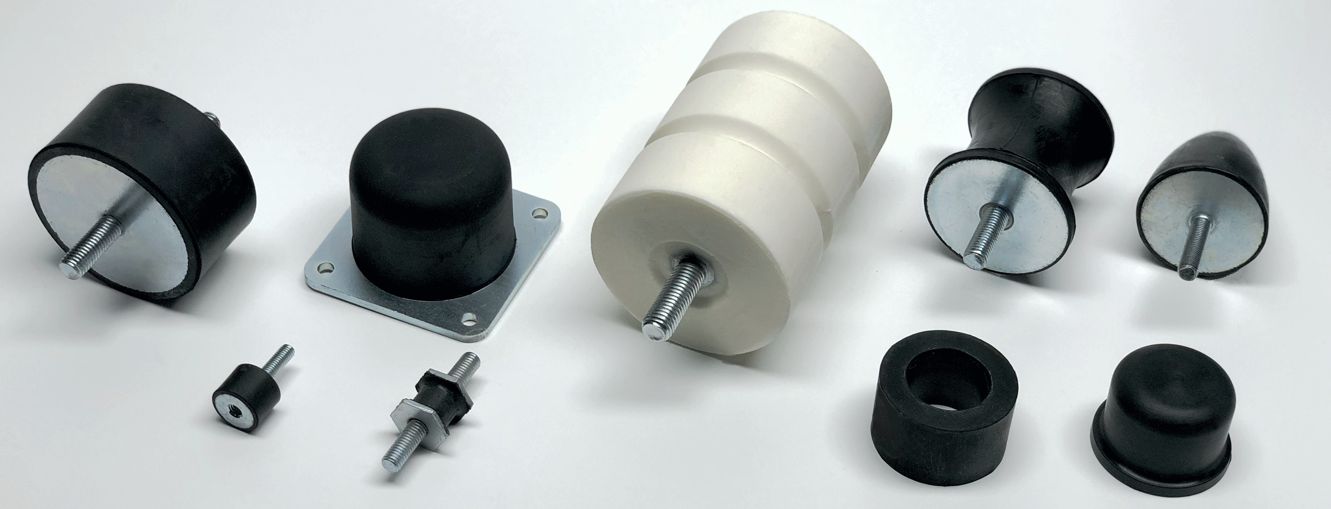Rubber-to-metal bonded parts are a type of composite material that combines the strength and durability of metal with the flexibility and resilience of rubber. This combination makes them ideal for a wide range of applications, from automotive and aerospace to industrial and medical.
What are Rubber-to-Metal Bonded Parts?

Rubber-to-metal bonded parts are made by bonding rubber to metal using a variety of techniques, including adhesives, vulcanization, and molding. The rubber can be natural or synthetic, and the metal can be any type of metal, including steel, aluminum, and brass. The resulting composite material has the strength and durability of metal, combined with the flexibility and resilience of rubber.
The Benefits of Rubber-to-Metal Bonded Parts
There are many benefits to using rubber-to-metal bonded parts, including:
Durability: Rubber-to-metal bonded parts are extremely durable and can withstand a wide range of temperatures, pressures, and environmental conditions. This makes them ideal for use in harsh environments, such as automotive and aerospace applications.
Flexibility: Rubber-to-metal bonded parts are highly flexible and can be molded into a wide range of shapes and sizes. This makes them ideal for use in applications where flexibility is important, such as medical devices and industrial equipment.
Vibration and Shock Absorption: Rubber-to-metal bonded parts are excellent at absorbing vibrations and shocks, making them ideal for use in applications where vibration and shock resistance is important, such as automotive and aerospace applications.
Noise Reduction: Rubber-to-metal bonded parts are also excellent at reducing noise, making them ideal for use in applications where noise reduction is important, such as automotive and industrial applications.
Corrosion Resistance: Rubber-to-metal bonded parts are highly resistant to corrosion, making them ideal for use in applications where corrosion resistance is important, such as marine and industrial applications.
Rubber-to-Metal Bonded Parts-Best Adhesive for Rubber to Metal -The Perfect Combination for Durability and Flexibility.
Process of Bonding Rubber to Metal
The process of bonding rubber to metal involves several steps, including surface preparation, adhesive application, vulcanization, and rubber injection molding. Let's take a closer look at each of these steps:
1.Surface Preparation: The first step in the rubber-to-metal bonding process is surface preparation. The metal substrate must be thoroughly cleaned and degreased to ensure that the adhesive will bond properly. Any surface contaminants, such as rust, oil, or dirt, can weaken the bond between the rubber and metal.
2.Adhesives: Adhesives are often used to bond rubber to metal. The adhesive is applied to the metal surface, and then the rubber is pressed onto the adhesive. The adhesive then cures, creating a strong bond between the rubber and the metal.
3.Vulcanization: rubber vulcanization is a process that involves heating rubber to a high temperature and then adding sulfur or other chemicals to create a chemical bond between the rubber molecules. The rubber is then bonded to the metal using an adhesive or other bonding agent.
4.Injection Over-Molding: rubber over-molding is a process that involves molding the rubber and metal together to create a single part. The rubber is first molded into the desired shape, and then the metal is inserted into the mold. The mold is then heated, causing the rubber to bond to the metal.
Rubber-to-metal bonded parts are used in a wide range of industries, including:
Automotive: Rubber-to-metal bonded parts are used extensively in the automotive industry, where they are used in engine mounts, suspension systems, and other critical components.
Aerospace: Rubber-to-metal bonded parts are also used in the aerospace industry, where they are used in aircraft engines, landing gear, and other critical components.
Industrial: Rubber-to-metal bonded parts are used in a wide range of industrial applications, including pumps, valves, and other equipment.
Medical: Rubber-to-metal bonded parts are used in medical devices, such as catheters and other implantable devices.
Melon is one professional rubber-to-metal bonding suppliers, which provide customized rubber-to-metal bonding process. The benefits of rubber-to-metal bonded parts include durability, flexibility, vibration and shock absorption, noise reduction, and corrosion resistance.
Recent Post
- Different Electrical Fire Retardant HCR Silicone Rubber and Liquid Silicone Rubber
- What Types of Rubber Are Used in Injection Molding? A Comprehensive Overview
- Top Quality Liquid Silicone Molding Outcomes At The Competitive Price
- Rubber-to-Metal Bonded Parts: The Perfect Combination for Durability and Flexibility
- Self-lubricating liquid silicone, Wear-resistant liquid silicone, Conductive liquid silicone, High tear resistance medical silicone, and their Applications
- Rubber Silicone O-Ring Benefits
